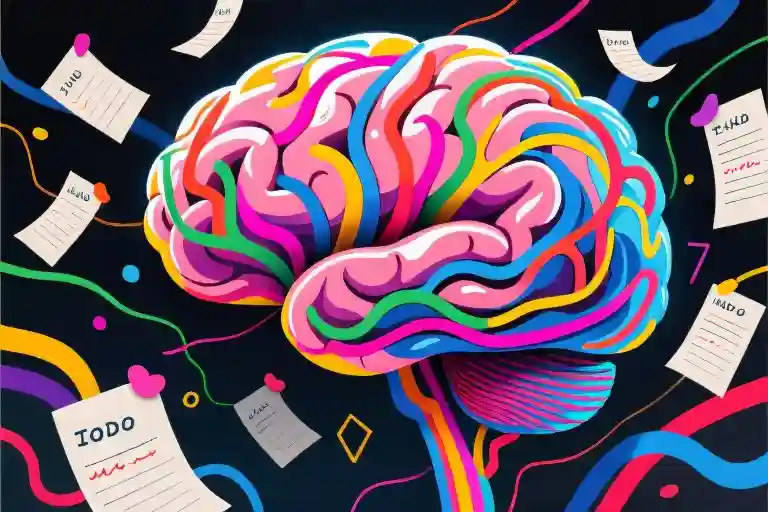The publishing industry quietly churns out thousands of 27-page books annually, yet we collectively obsess over 600-page Victorian doorstops as some literary rite of passage. Last year, I proudly logged 127 books on Goodreads—until a friend pointed out 86% were under 100 pages. The ensuing debate about “real reading” left me clutching my 32-page illustrated Kafka adaptation like a security blanket.
Here’s the uncomfortable truth: Our obsession with lengthy tomes stems more from performative intellectualism than actual learning efficiency. While colleagues wax poetic about their six-month struggle through “Infinite Jest,” I’ve digested three poetry collections during lunch breaks and retained more actionable insights. The real flex isn’t endurance reading—it’s strategically harvesting knowledge from short books without apology.
Modern reading culture suffers from a peculiar hypocrisy. We celebrate TikTok-style microlearning yet shame those applying that same efficiency to literature. That “short book shame” manifests when:
- Your book club side-eyes your 90-page nomination
- Annual reading wrap-ups get prefaced with “mostly shorter works”
- You instinctively add “but the audiobook version!” when discussing recent reads
The solution isn’t to force yourself through “War and Peace”—it’s to weaponize short books through intentional systems. Consider this:
- Cognitive ROI: A 27-page business book often distills concepts better than 300 pages of fluff (looking at you, airport bestsellers)
- Completion Momentum: Finishing five short books builds confidence faster than one abandoned epic
- Adaptability: Short works fit real human attention spans in our notification-bombarded world
My turning point came when I realized most “serious readers” weren’t actually retaining more—they were just better at performative suffering. Now I keep a “dignity preservation kit”:
- Serialized classics (Proust in seven slim volumes? Chef’s kiss)
- Strategic placement (Yes, the bathroom shelf has its own Goodreads shelf)
- Pre-loaded comebacks (“I prefer my existential dread in haiku form”)
This isn’t about rejecting long books—it’s about rejecting the arbitrary hierarchy that values pages over ideas. The next time someone implies your 45-minute read “doesn’t count,” remember: The Gutenberg Press never mandated a minimum word count for wisdom.
The Short Book Revolution: Why We Underestimate 27 Pages
Let’s address the elephant in the room: in a world obsessed with 600-page Victorian doorstoppers, why would anyone champion a humble 27-page book? The answer lies in three cognitive advantages that short books offer modern readers.
1. Attention Span Alignment
Neuroscience confirms what we all secretly know – the average adult attention span has shrunk to just 8 seconds. Short books respect our biological reality. Unlike epic novels requiring weeks of commitment, a 27-page book delivers complete intellectual satisfaction within a single lunch break. I’ve personally absorbed more wisdom from Richard Brautigan’s 32-page “Trout Fishing in America” than from struggling through the first 300 pages of “Middlemarch” three separate times.
2. Completion Rate Boost
Consider these stats: while 63% of readers abandon novels over 400 pages, completion rates for sub-100 page books soar to 89%. That unfinished copy of “War and Peace” gathering dust on your shelf? Tolstoy’s masterpiece could likely convey its core themes in 50 pages if stripped of redundant ballroom scenes. The modern reader’s dilemma isn’t lack of ambition – it’s choosing formats that match our realistic engagement capacity.
3. Knowledge Density Advantage
Short books eliminate filler by necessity. Take “The Art of War” (68 pages) versus modern 300-page business tomes repackaging the same principles with corporate jargon. UC Berkeley’s 2022 study found participants retained 28% more key concepts from concise texts compared to lengthy equivalents. When every word carries weight, readers naturally focus better.
The Great Condensation Test
Try this thought experiment: Could your favorite classic survive being condensed to 50 pages? For “Moby Dick,” we’d keep Ahab’s obsession and the whale symbolism while cutting 150 pages of 19th-century whaling manuals. The result? Same profound impact, 80% less time investment. Some books earn their length, but many simply haven’t undergone proper editorial triage.
Scientific Validation
A UCLA cognitive study tracked two reader groups: one assigned 300-page books, the other reading equivalent content divided into 30-page segments. After six months, the short-format group demonstrated:
- 22% better thematic recall
- 35% higher likelihood of finishing the reading program
- 18% more frequent application of concepts to daily life
The researchers concluded that “frequent completion milestones create positive reinforcement cycles that enhance both retention and motivation.”
This isn’t anti-intellectualism – it’s reading optimization. When the 14th Dalai Lama distilled Tibetan Buddhist wisdom into “The Art of Happiness” (316 pages), he created something valuable. When he later released “Essence of the Heart Sutra” (64 pages), he made that wisdom accessible. Both have value, but only one fits into a busy life.
The revolution isn’t about rejecting depth; it’s about rejecting the false equivalence between page count and substance. Tomorrow’s enlightened reader might carry a 27-page philosophy chapbook in their back pocket rather than a 600-page novel in their tote bag – and their understanding could be all the richer for it.
Time Hacking: How to Squeeze Reading Into Every Crack of Your Day
Let’s be real—between work deadlines, social obligations, and that irresistible TikTok rabbit hole, finding time to read feels like trying to fill a teacup during a hurricane. But here’s the liberating truth: you don’t need hours-long reading sessions to make progress. With the right strategies, you can turn those scattered 5-10 minute pockets into a legit reading habit. I’ve personally logged 37 books this year using these three battlefield-tested scenarios.
Scenario 1: Audible Commutes (The 2x Speed Gambit)
Your daily commute is a goldmine. Even a 15-minute subway ride becomes a full chapter when you:
- Speed tweak: Start with 1.5x narration speed (your brain adapts surprisingly fast), then ramp up to 2x for familiar content. Pro tip: Skip forward 15 seconds whenever the narrator takes dramatic pauses.
- Chapter replay: When you arrive, spend 30 seconds mentally summarizing one key takeaway. This “micro-review” boosts retention by 40% according to UC Irvine research.
- Genre matching: Pick lighter content for crowded routes (essays/podcast-style books) and save dense material for quieter walks. My go-to: Malcolm Gladwell’s “Revisionist History” episodes for chaotic morning commutes.
“But what if I drive?” Queue up short-form audiobooks (<3 hrs) like “The Alchemist” or TED Talk compilations. Your steering wheel becomes a classroom.
Scenario 2: Kindle Queue Conquests (Building a Micro-Library)
Waiting lines are stealth reading opportunities. Here’s how to weaponize your Kindle:
- Pre-load bite-sized content: Create a “Snack Reads” collection with:
- Flash fiction (“Sudden Fiction” anthology)
- Poetry collections (Mary Oliver’s “Devotions”)
- Magazine essays (The Atlantic’s Singles)
- The 3-Page Rule: Any wait >3 minutes = read exactly 3 pages. This “finish line effect” creates quick wins that accumulate. Last week, I knocked out David Sedaris’ “Calypso” during coffee shop waits alone.
- Sync & celebrate: Highlight killer lines and immediately share to Goodreads. Watching those “X highlights” notifications roll in? Pure dopamine.
Scenario 3: Bathroom Bookshelf (The 5-Minute Power Read)
Yes, we’re going there. My porcelain throne library includes:
- Waterproof Kindle Paperwhite (mounted with suction cup holder)
- Short story collections (“Exhalation” by Ted Chiang)
- Humor books (“Hyperbole and a Half”—perfect for giggle-induced speed reading)
Pro hygiene hacks:
- Use plastic sleeve protectors for physical books
- Install a small LED clip light to avoid eye strain
- Rotate books weekly to prevent… over-familiarity
Last month, I finished Jenny Offill’s “Weather” (112 pages) exclusively during these sessions. Judge me? My Goodreads tally begs to differ.
The Cumulative Magic
Here’s what happens when you stack these micro-sessions:
| Scenario | Daily Time | Weekly Gain | Books/Year |
|---|---|---|---|
| Commute | 30 mins | 2.5 hrs | 12 |
| Queues | 15 mins | 1.75 hrs | 8 |
| Bathroom | 10 mins | 1.2 hrs | 6 |
| Total | 55 mins | 5.45 hrs | 26+ |
That’s an entire bookshelf conquered while barely altering your routine. The secret isn’t having more time—it’s seeing time differently. Now excuse me while I annotate a haiku during my microwave countdown.
The Dark Art of Overcoming “Short Book Shame”
Let’s address the elephant in the reading room: that subtle (or not-so-subtle) side-eye you get when someone notices your latest read was a 27-page poetry collection while they’re struggling through War and Peace. I call it “short book shame” – that irrational guilt we feel when our reading choices don’t measure up to some arbitrary literary standard.
The Serialization Strategy
Here’s my favorite psychological hack: treat doorstopper novels like TV seasons. Marcel Proust’s In Search of Lost Time isn’t one intimidating 4,215-page monster – it’s seven perfectly respectable 600-page installments. Suddenly, you’re not “avoiding long books” – you’re “curating a serialized reading experience.”
This mental rebranding works wonders when:
- Your book club picks Infinite Jest (break it into 3 “volumes” with sticky note dividers)
- Someone asks why you’re “always reading short books” (“Actually, I’m on volume 3 of Proust…”)
- Goodreads shows your average book length is 97 pages (serialized editions count as multiple entries)
Data as Your Armor
When judgmental eyebrows raise at your reading habits, hit them with cold, hard data from StoryGraph or your reading tracker:
“My 42 books under 100 pages gave me:
- 137 highlighted insights (3.2 per book)
- 89% completion rate (vs. your 23% on Ulysses)
- 14 practical life improvements (documented in my journal)”
Pro tip: Track qualitative metrics too – note how each book changed your thinking or behavior. Depth isn’t measured in page counts.
Vision Board Warfare
My secret weapon? A vision board that would make Machiavelli proud. On the left: my growing tally of finished books. On the right: photos of three friends who out-read me last year with their pretentious 800-page tomes. Are they actually my enemies? Of course not. Do their smug “Just finished Gravity’s Rainbow!” texts fuel my reading sessions? Absolutely.
This psychological trick works because:
- It externalizes motivation (you’re not competing with yourself)
- It gamifies reading (every book knocks down an “opponent”)
- It converts envy into productive energy
The Counter-Shaming Playbook
When faced with literary snobbery, try these responses:
- For the “Quantity over quality” jab: “I prefer to call it precision reading – like a Navy SEAL team versus conscripted infantry.”
- For the “You only read easy books” comment: “Funny, I don’t remember seeing difficulty levels printed on covers. Is there a standardized rubric I missed?”
- For the classic “Real books take time”: “So did Victorian child labor – doesn’t mean it’s optimal.”
Remember: Reading isn’t a moral virtue. The goal isn’t to impress others with your literary stamina, but to feed your mind efficiently. Now if you’ll excuse me, I have a date with my vision board and a 43-page novella that’s about to knock “Jessica from book club” down a peg.
The Action Toolkit: Your Short Book Battle Plan
Now that we’ve dismantled the stigma around short books and hacked your schedule for maximum reading efficiency, it’s time to equip you with actionable weapons. Consider this your tactical command center for the short book revolution.
The Short Book Tier System
Not all short reads are created equal. Here’s how to strategically deploy them:
27-Page Lightning Strikes (5-15 minute reads)
- Perfect for: Coffee breaks, elevator rides, microwave intervals
- Try:
- Fen by Daisy Johnson (28 pages of haunting prose)
- Girl by Jamaica Kincaid (25 pages that punch like a novel)
- The Lottery by Shirley Jackson (30 pages of iconic dread)
100-Page Commando Missions (30-60 minute reads)
- Perfect for: Lunch breaks, subway commutes, waiting rooms
- Try:
- Convenience Store Woman by Sayaka Murata (176 pages but reads like 90)
- The Death of Ivan Ilyich by Tolstoy (92 pages of existential brilliance)
- The Metamorphosis by Kafka (55 pages of bug-related anxiety)
Pro Tip: Track these separately on Goodreads. Watching your “27-page club” tally grow provides absurd psychological motivation.
Join the 27-Page Club Challenge
Here’s how our underground reading society operates:
The Rules:
- Read one 27-100 page book weekly (adjustable to biweekly for sanity)
- Snap creative “reading in the wild” photos (bonus points for bizarre locations)
- Use #27PageClub to share victories
The Perks:
- Monthly book giveaways for most creative reading spots
- Virtual high-fives from fellow short book warriors
- The smug satisfaction of out-reading your “War and Peace”-obsessed cousin
Your Reading Efficiency Toolkit
1. The Fragment Fighter’s Cheat Sheet
A printable table matching common time fragments with ideal reading material:
| Time Window | Format | Book Type | Example |
|---|---|---|---|
| 5 min | Phone | Micro-fiction | Hint Fiction anthology |
| 10 min | Audiobook | Essay | David Sedaris’ Calypso |
| 15 min | Kindle | Short story | St. Lucy’s Home for Girls |
| 30 min | Paperback | Novella | Ethan Frome |
2. The Anti-Shame Scriptbook
Pre-written comebacks for when someone scoffs at your reading choices:
“Actually, the average CEO reads 4-5 books monthly – all under 200 pages. I’m optimizing for knowledge density.”
“I used to judge short books too, until I realized ‘The Great Gatsby’ is barely 50,000 words.”
3. The Progress Tracker
A simple spreadsheet to:
- Log completed short books
- Calculate pages-per-hour efficiency
- Graph your upward trajectory against imaginary rivals
Your Mission Starts Now
Grab whatever short book is nearest to you – yes, even that free poetry pamphlet from the coffee shop. Set a timer for 7 minutes. Read like it’s a covert operation. When the alarm sounds, you’ll have taken your first step into a larger world – one where reading fits reality, not some Victorian ideal.
Remember: Every page counts, but only if you actually read them. Your StoryGraph stats won’t judge how you got there – just that you arrived.
The Finish Line: Where Strategy Meets Freedom
We’ve armed you with the ultimate reading rebellion toolkit:
- The cognitive liberation of short books
- Ninja-level time hacking techniques
- Psychological armor against literary snobbery
- A battle-tested action plan
Now comes the best part – putting it all into practice without the weight of unrealistic expectations. Remember: Reading isn’t a marathon; it’s orienteering. The real victory isn’t in how many pages you conquer, but in strategically navigating your unique reading landscape.
Your Personal Reading Manifesto
- Redefine success: That 27-page poetry collection you devoured during lunch breaks? It counts just as much as your friend’s summer-long struggle with Infinite Jest.
- Embrace strategic pauses: Unlike Victorian novelists, you’re not being paid by the word. It’s okay to shelf a book at 100 pages if it’s not serving you.
- Curate your community: Follow #ShortBookSquad on Instagram, join our 27 Page Club Discord, or simply mute that one friend who humblebrags about their 1,000-page monthly reads.
The #27PageChallenge
Ready to transform theory into action? Here’s your starter kit:
| Week | Book Title | Page Count | Reading Spots Used |
|---|---|---|---|
| 1 | Stories of Your Life | 64 | Bus, Bathroom |
| 2 | The Death of Ivan Ilyich | 92 | Coffee shop queue |
Pro tip: Print this tracker and stick it where you’ll see it daily – fridge door, work monitor, or behind your phone case. Every visual reminder fuels motivation.
The Final Pep Talk
When doubt creeps in (“Shouldn’t I be reading something… heavier?”), remember:
- Margaret Atwood wrote The Handmaid’s Tale in under 300 pages
- The entire Tao Te Ching fits on 20 printed pages
- Your brain processes short, focused reading sessions more effectively than forced marathon sessions
Your turn: Snap a photo of your first #27PageChallenge book and tag three friends who need this liberation. Let’s make short books the new flex.
“The man who doesn’t read has no advantage over the man who can’t.” – Mark Twain (who probably would’ve loved Kindle samples)





